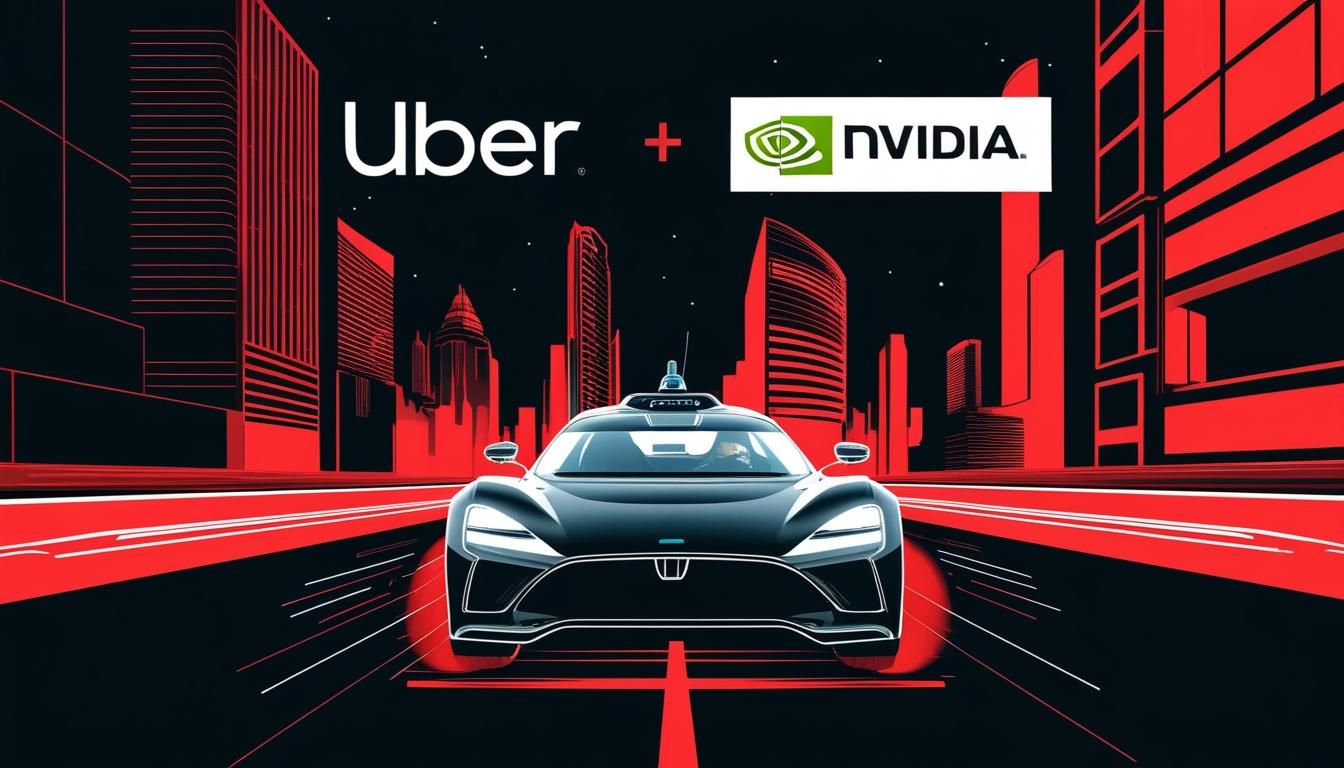Uber Technologies Inc. has announced a strategic partnership with NVIDIA Corporation to enhance its autonomous vehicle (AV) technologies, a move that has positively impacted Uber's stock prices, which rose by 2.26% in premarket trading on Tuesday. This collaboration aims to leverage NVIDIA’s technology platforms, including Cosmos and DGX Cloud, to expedite the development of autonomous driving solutions.
The partnership was unveiled during the Consumer Electronics Show (CES) 2025, where both companies highlighted the potential of NVIDIA’s tools to transform the industry. The Cosmos platform is described as a state-of-the-art simulation tool that creates realistic driving environments by generating physics-based videos. This technology utilises an extensive dataset of around 9,000 trillion tokens sourced from 20 million hours of video, enabling developers to simulate various industrial and driving scenarios effectively. Furthermore, NVIDIA’s DGX Cloud offers a high-performance, fully managed environment that provides companies with the necessary infrastructure for training and optimizing AI models.
Uber has indicated that the collaboration will particularly harness the extensive mobility data amassed from its vast user base, enabling the creation of more efficient AI models tailored to the transportation industry. Dara Khosrowshahi, Uber's CEO, stated, “Generative AI will power the future of mobility, requiring both rich data and very powerful compute,” elaborating on the belief that joint efforts with NVIDIA can fast-track the timeline for safe autonomous driving solutions. He also expressed optimism about the collaboration, suggesting that it will aid in building the necessary infrastructure and strategies for launching AV services in select cities.
NVIDIA’s CEO, Jensen Huang, offered substantial insights during his CES keynote, asserting that self-driving cars would emerge as a multi-trillion-dollar robotics industry. The company is also aligning with Toyota Motor Corp to implement its Drive AGX Orin supercomputer and advanced driver assistance systems in Toyota’s upcoming models, illustrating NVIDIA’s deepening engagement within the automotive sector.
Uber's approach to AV technology has shifted from in-house development to forming partnerships with multiple AV companies, including notable collaborations with Waymo and Aurora Innovation for robotaxis and trucking solutions. Although Uber has faced challenges related to its past attempts in the autonomous driving sphere—such as legal disputes and a tragic incident involving a self-driving vehicle—its current strategy seems focused on acting as an intermediary between users and AV technology providers.
As Uber prepares for a more accelerated roll-out of AV solutions, the company plans to launch operations in partnerships with Waymo in Austin and Atlanta this year. Khosrowshahi highlighted the complexities of entering new markets, emphasizing the need for significant investment in infrastructure and operational capabilities to ensure the success of these pilot programmes.
Market analysis indicates that the global autonomous vehicle sector is on a growth trajectory, with projections estimating it could reach $556 billion by 2026. This future is likely to be shaped by innovations from partnerships like that of Uber and NVIDIA, which aim to spearhead advancements in both safety and efficiency in the realm of autonomous transportation. However, the deployment of these technologies does not come without significant challenges, necessitating careful navigation of regulatory complexities and the need for robust data security protocols.
The collaboration between Uber and NVIDIA marks a notable development in the ongoing evolution of autonomous vehicle technology, signalling a significant step forward towards a future where self-driving vehicles could play a central role in transportation.
Source: Noah Wire Services
